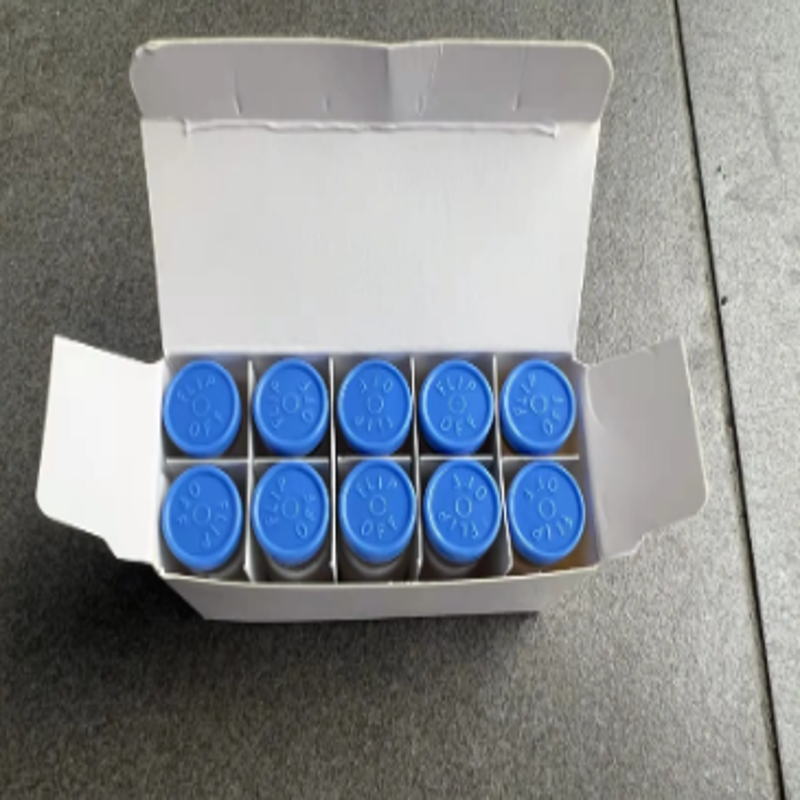-
Categories
-
Pharmaceutical Intermediates
-
Active Pharmaceutical Ingredients
-
Food Additives
- Industrial Coatings
- Agrochemicals
- Dyes and Pigments
- Surfactant
- Flavors and Fragrances
- Chemical Reagents
- Catalyst and Auxiliary
- Natural Products
- Inorganic Chemistry
-
Organic Chemistry
-
Biochemical Engineering
- Analytical Chemistry
- Cosmetic Ingredient
-
Pharmaceutical Intermediates
Promotion
ECHEMI Mall
Wholesale
Weekly Price
Exhibition
News
-
Trade Service
*For medical professionals only
The patient, a man with metastatic hormone-sensitive prostate cancer (mHSPC) with multiple bone metastases, achieved a deep reduction in PSA after 2 months of treatment with apatamide + androgen deprivation therapy (ADT), and the patient's PSA decreased from 216.
69 ng/ml to 0.
0 ng/ml, and the pain symptoms improved significantly
.
This solution has enabled patients to achieve a breakthrough in the treatment of PSA "0", bringing long-term hope
for patients.
Basic information
The patient is male, 65 years old
.Complaints: Low back pain without obvious triggers, accompanied by discomfort
with urination.Anamnesis: 20 years after varicose vein surgery on the right leg, hypertension for more than
3 years.Pathology of admission: January 21, 2022, transrectal prostate puncture under ultrasound guidance, pathology report: 4 left prostate tissue, 4 right prostate tissue, 1 left prostate adenocarcinoma, Gleason score 4+5=9 points
.
Introduction to the medical history
The results of MRI examination on admission showed that abnormal signal at 3-6 points around the left periphery of the prostate, prostate cancer consideration, local breakthrough of the capsule, suspected involvement of the left seminal vesicle gland, metastasis of the right iliac paravascular lymph nodes, and pelvic bone metastasis
.
Figure 1.
MRI findings
Whole-body bone scan showed that multiple bone erection distribution was increased and concentrated, and malignant lesions were considered
.
Figure 2.
Whole-body bone scan findings
Disease diagnosis
Metastatic hormone-sensitive prostate cancer with multiple bone metastases, clinical stage: T3bN1M1b
.
Treatment plan and efficacy assessment
On January 25, 2022, the PSA was 216.
69 ng/ml, and the patient began treatment with apatamide (240 mg QD) and goserelin acetate (10.
8 mg
).
On February 24, 2022, PSA continued to drop to 0.
29ng/ml
.
On March 24, 2022, PSA continued to drop to 0ng/ml
.
Table 1.
Changes in PSA
Case analysis
The patient was admitted to the hospital due to low back pain with discomfort in urination without obvious cause, and after comprehensive examination, mHSPC (T3bN1M1) was diagnosed with multiple bone metastases throughout the body, and the Gleason score was as high as 9
.
This patient is a patient with high tumor burden mHSPC and is
at high risk of disease progression.
Androgen deprivation therapy (ADT) is an important systemic treatment for prostate cancer and plays an important role in the treatment of prostate cancer of different stages
.
Gonadotropin-releasing hormone agonists represented by goserelin and others are the most commonly used class of drugs
for ADT treatment.
Goserelin can effectively control testosterone to castration levels, delay disease progression, and improve survival benefits
.
However, ADT alone has a poor outcome, with radiographic progression-free survival (rPFS) of only 14.
8 months [1].
At present, both EAU guidelines and National Comprehensive Cancer Network (NCCN) guidelines recommend apatamide as the standard of care for patients with mHSPC [2-4], and the new CUA guidelines also recommend apatamide for patients with prostate cancer who are newly diagnosed with metastases and can tolerate apatamide therapy (level 1 evidence) [5].
。 The initial treatment of this patient was treated with apastamide combined with ADT, and the PSA decreased from 216.
69 ng/ml to 0.
0 ng/ml after 2 months, and the pain symptoms improved significantly.
Professor Wang Mingchao
Department of Urology, Run Run Shaw Hospital, Zhejiang University School of Medicine
Ph.
D.
, Associate Chief Physician
Master tutor of Zhejiang University
Member of the Basic Science Group of the Urology Branch of the Chinese Medical Association
Youth Committee Member of Urology Branch of Zhejiang Medical Association
Postdoctoral fellow at Zhejiang University School of Medicine
He has presided over 1 National Natural Science Foundation of China, 1 Provincial Natural Science Foundation, and 2 Provincial Medical and Health Science and Technology Plans
Expert comment one
At present, prostate cancer ranks first in the incidence of genitourinary malignant tumors in Chinese men, and its mortality rate is also increasing significantly
.
Prostate cancer is usually androgen-dependent, with surgery and drug castration as the main treatment modality [6].
Patients in the mHSPC stage who do not effectively control disease progression have a poor
prognosis once they enter the metastatic castration-resistant prostate cancer (mCRPC) stage.
Therefore, the 2019 version of metastatic prostate cancer chemotherapy Chinese expert consensus pointed out that the treatment goal of mHSPC is to delay the progression of mHSPC to mCRPC, so as to prolong the survival of patients more effectively [7].
Abnormal androgen receptor (AR) signaling pathway is the key to promote the progression of mHSPC to mCRPC, AR inhibitors are important treatment drugs for prostate cancer, but traditional AR inhibitor therapy compared with ADT therapy, patients have limited benefits, and long-term use can transform their inhibitory effect on AR into an agonistic effect, thereby promoting the proliferation of prostate cancer cells [8-11].
。 As a novel selective AR inhibitor, apatamide can ultimately inhibit the activation of AR signaling pathway by inhibiting AR activation, inhibiting nuclear transport of activated AR, and blocking AR-mediated gene transcription
.
The TITAN study [12] is an international multicenter phase III study exploring the role of apatamide in the treatment of mHSPC, enrolling 1052 patients with mHSPC (including 94 Chinese patients), 1:1 randomized to apatamide + ADT treatment group and placebo + ADT control group
。 The results showed that the median follow-up of 44.
0 months significantly reduced the risk of death by 35% in the apatamide group compared with the placebo group, and the median overall survival (OS) was 52.
2 months in the two groups, respectively, and the cross-over patients were analyzed
as the intention-to-treat (ITT) population in the placebo group.
Patients with bone metastases alone at baseline had a 50%
lower risk of death with combination therapy with apatamide.
In terms of safety, the incidence of adverse events (TEAEs) in the overall treatment of apatamide group and placebo group was similar, the cumulative incidence of grade 3~4 TEAE, severe AE and the incidence of falls, fractures and fatigue in any level of treatment were similar, and apatamide + ADT better maintained health-related quality of life (HRQoL), and the overall tolerability and safety were good
.
The results of the TITAN study [12] showed that apatamide had a significant survival benefit compared with traditional ADT treatment and showed a rapid, durable deep response to PSA
.
The OS benefit was consistent
across all preset subgroups, with apatamide group.
In addition, the controllable adverse events in the TITAN study and the stable quality of life of patients after treatment also provided a guarantee
of treatment benefits.
The diagnosis and treatment of the above patients is also another confirmation
of the excellent efficacy and safety performance of apatamide in clinical research.
After 2 months of initial treatment with apatamide + ADT, PSA decreased from 216.
69 ng/ml to 0.
0 ng/ml, and the pain symptoms improved significantly, which made the patient achieve a breakthrough in the treatment of PSA "0", which is very valuable
.
Professor Guoqing Ding
Ph.
D.
, Chief Physician
Vice President of Run Run Shaw Hospital affiliated to Zhejiang University School of Medicine
Member of the Robotics Group of the Urology Branch of the Chinese Medical Association
Member of the Standing Committee of the Urology Branch of the Chinese Equipment Association
Member of the Standing Committee of the University Affiliated Hospital Branch of the Chinese Hospital Association
Member of the Standing Committee of the Urology Branch of Zhejiang Medical Association, Deputy Leader of the Minimally Invasive Science Group
Member of the Standing Committee of the Urologist Branch of Zhejiang Medical Doctor Association
Vice Chairman of Genitourinary Tumor Committee of Zhejiang Medical Doctor Association
Vice Chairman of Genitourinary Tumor Special Committee of Zhejiang Anti-Cancer Association
Vice Chairman of the Urological Andrology Rehabilitation Committee of Zhejiang Rehabilitation Medical Association
Expert Comment II
PSA is a type of serine protease secreted by prostate epithelial cells and prostate acinar vesicles, and is one of
the medically recognized markers of prostate cancer.
Studies have confirmed that compared with healthy people, serum PSA levels in prostate cancer patients are significantly increased, and PSA levels are one of the
independent risk factors for CRPC.
The level of PSA can reflect the patient's sensitivity to endocrine drugs, when the patient is treated with endocrine drugs, PSA levels will quickly decline to low values, and when the patient becomes resistant to drugs, the body will enter the CRPC stage, at which time PSA levels will increase [13].
In this mHSPC patient, PSA decreased from 216.
69 ng/ml to 0.
0 ng/ml
after 2 months of treatment with apatamide.
The TITAN study [12] also confirmed that apatamide can achieve rapid and deep remission of PSA, and the analysis of PSA changes showed that apatamide significantly reduced the risk of PSA progression by 74%, and PSA could reach unmeasurable levels (PSA < 0.
2 ng/ml) in 68.
4% of patients, compared with only 28.
7%<b12> in the control group 。 Apatamide can rapidly and deeply reduce PSA levels, and the median time to reach the minimum PSA value in the apatamide group was 5.
6 months, and the median PSA50, PSA90 and PSA ≤ 0.
2 ng/mL were all within
3 months.
PSA is an important prognostic factor for prostate cancer, and previous studies have shown that the greater the decrease in PSA in patients with advanced prostate cancer, the greater the benefit of OS and progression-free survival (PFS) [14].
The final results of TITAN analysis showed [12]: the median value of the median follow-up of the apatamide regimen had not reached the median value for nearly 4 years, and the risk of mHSPC patients entering mCRPC was reduced by 66%, which greatly extended the time for
mHSPC to progression to mCRPC.
After excluding cross-enrollment, compared with placebo + ADT treatment, apatamide + ADT treatment significantly prolongs OS, reduces the risk of death by 48%, and has a 4-year survival rate of 65.
2%, which is significantly higher than that of 37.
9%
in the placebo group.
Subgroup analysis showed a 50% reduction in the risk of death in patients with only bone metastases at the beginning of treatment with apatamide in combination with ADT
.
The findings support the early use of apatamide in combination with ADT to achieve optimal treatment
for patients with mHSPC.
Prof.
Yelev
Doctor of Medicine, Chief Physician, Professor, Doctoral Supervisor
Administrative Director of the Department of Urology, Fujian Provincial Hospital
Deputy Director of General Surgery, Fujian Provincial Jinshan Hospital
National Committee Member of Urology Branch (CUA) of Chinese Medical Association, Member of CUA Oncology Group
National Committee Member of Urologist Branch of Chinese Medical Doctor Association (CUDA), Member of Minimally Invasive and Robotics Group
Member of Endoscopist Branch of Chinese Medical Doctor Association
Member of the Standing Committee of the Urology Branch of the World Association of Chinese Physicians
Member of the Standing Committee of the Urology Branch of the Chinese Medical Equipment Association
Vice President of Urologist Branch of Fujian Medical Doctor Association
Vice Chairman of the Professional Committee of Urogenital Oncology of Fujian Anti-Cancer Association
Member of the Standing Committee of the Urology Branch of Fujian Medical Association and Deputy Head of the Transplantation Group
Vice President of Urology Branch of Fujian Strait Medical and Health Exchange Association
References:
[1] Fizazi K, Tran N, Fein LE, et al; LATITUDE Investigators.
Abiraterone plus prednisone in metastatic,castration-sensitive prostate cancer[J].
N Engl J Med.
2017; 377(4):352-360.
[2] EAU/ESTRO/ESUR/SIOG Guidelines on Prostate Cancer 2020.
[3] NCCN Clinical Practice Guideline in Prostate Cancer 2020 v3.
[4] Chinese Society of Clinical Oncology (CSCO) Guidelines for the Diagnosis and Treatment of Prostate Cancer (2020 Edition).
[5] HUANG Jian.
Guidelines for the diagnosis and treatment of urology and andrology diseases in China[M].
Science Press, 2020.
[6] JIANG Jingqi, HE Dalin, LI Lei, QIN Weijun, CHAO Tie, YANG Zengyue, WEN Bin, CHEN Peng, LI Hengping, ZHOU Fenghai, YIN Yongsheng, ZHANG Bo, WANG Yujie, CHENG Yongyi, LI Jun, WANG Zhiping.
Real-world clinical observation of apatamide in the treatment of prostate cancer patients in China[J].
Journal of Modern Urology,2022,27(10):851-855.
)
Chinese expert consensus on chemotherapy for metastatic prostate cancer (2019 edition)[J].
Chinese Journal of Urology,2019(10):721-725.
)
[8] Veldscholte J, Berrevoets CA, Ris-Stalpers C, etal.
The androgen receptor in LNCaP cells contains a mutation in the ligandbinding domain which affects steroid binding characteristics and response toantiandrogens.
The Journal of Steroid Biochemistry and Molecular Biology.
1992; 41(3-8):665-669.
[9] LIU Jun, HU Weilie, SONG Bo, et al.
Research progress on the pathogenesis of androgen-independent prostate cancer[J].
Chinese Journal of Andrology,2009,23(8):66-69.
)
[10] QIAN Subo, SHEN Haibo, CAO Qifeng, et al.
Efficacy analysis of anti-androgen withdrawal in the treatment of castration-resistant prostate cancer[J].
Journal of Modern Urology,2015,20(1): 40—43.
)
[11] Ishikura N, Kawata H, Nishimoto A, et al.
CH5137291, an androgen receptor nuclear translocation-inhibiting compound,inhibits the growth of castration-resistant prostate cancer cells.
International Journal of Oncology.
2015; 46(4):1560-1572.
[12] Chi KN, Chowdhury S, Bjartell A, et al.
Apalutamide in Patients With Metastatic Castration-Sensitive Prostate Cancer: Final Survival Analysis of the Randomized, Double-Blind, Phase III TITAN Study.
J Clin Oncol.
2021; 39(20):2294-2303.
[13] Wen Xueli.
Predictive value of bone markers and PSA on the development of prostate cancer to CRPC[J].
International Journal of Laboratory Medicine,2021,42(24):3036-3040.
)
[14] Sato H, Narita S, Tsuchiya N, et al.
Impact of early changes in serum biomarkers following androgen deprivation therapy on clinical outcomes in metastatic hormone-sensitive prostate cancer.
BMC Urol.
2018; 18(1):32.







